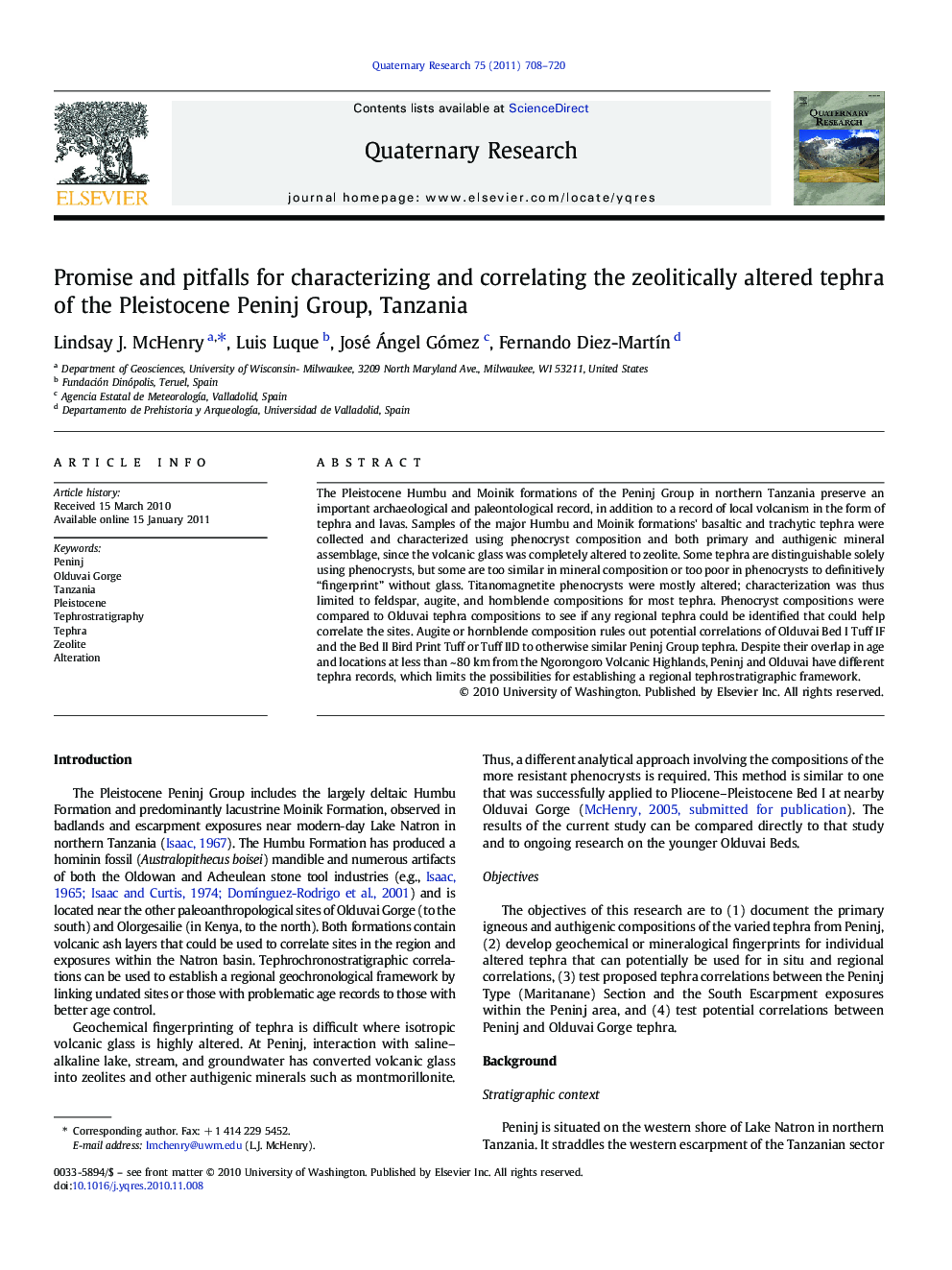| Article ID | Journal | Published Year | Pages | File Type |
|---|---|---|---|---|
| 1045841 | Quaternary Research | 2011 | 13 Pages |
The Pleistocene Humbu and Moinik formations of the Peninj Group in northern Tanzania preserve an important archaeological and paleontological record, in addition to a record of local volcanism in the form of tephra and lavas. Samples of the major Humbu and Moinik formations' basaltic and trachytic tephra were collected and characterized using phenocryst composition and both primary and authigenic mineral assemblage, since the volcanic glass was completely altered to zeolite. Some tephra are distinguishable solely using phenocrysts, but some are too similar in mineral composition or too poor in phenocrysts to definitively “fingerprint” without glass. Titanomagnetite phenocrysts were mostly altered; characterization was thus limited to feldspar, augite, and hornblende compositions for most tephra. Phenocryst compositions were compared to Olduvai tephra compositions to see if any regional tephra could be identified that could help correlate the sites. Augite or hornblende composition rules out potential correlations of Olduvai Bed I Tuff IF and the Bed II Bird Print Tuff or Tuff IID to otherwise similar Peninj Group tephra. Despite their overlap in age and locations at less than ~ 80 km from the Ngorongoro Volcanic Highlands, Peninj and Olduvai have different tephra records, which limits the possibilities for establishing a regional tephrostratigraphic framework.
